
Unfinished Spaces, a film that we've previously covered here on Archinect, is a documentary about the ambitious Cuban National Art School project, conceived, and ultimately killed, by the revolutionary communist Cuban regime.
In addition to an exhaustive schedule of screenings, it will be televised, for the first time, tomorrow night on PBS (10pm).
In 1961, three young, visionary architects were commissioned by Fidel Castro and Che Guevara to create Cuba's National Art Schools on the grounds of a former golf course in Havana, Cuba. Construction of their radical designs began immediately and the school's first classes soon followed. Dancers, musicians and artists from all over the country reveled in the beauty of the schools, but as the dream of the Revolution quickly became a reality, construction was abruptly halted and the architects and their designs were deemed irrelevant in the prevailing political climate. Forty years later the schools are in use, but remain unfinished and decaying. Castro has invited the exiled architects back to finish their unrealized dream.
I briefly chatted with Alysa Nahmias, one of the filmmakers (and architect), to get a little more information about the origins of the project, some thoughts of on the reaction to the film, and the rumors of Norman Foster's involvement with the school of ballet building.

Alysa Nahmias
What motivated you to create this documentary?
In Spring 2001, on an architectural-educational tour of Havana, I first had the opportunity to visit the National Art Schools – organic, modern, brick buildings, now in ruins, but still home to Cuba’s best and brightest art students.
After touring the campus, I met architect Roberto Gottardi. Roberto brought with him an old file full of photographs and press clippings, weathered documents that illustrated the story of his most monumental architectural project, the first and most impressive construction of the Cuban Revolution.
Roberto struck me as a modern day Don Quixote, whose creative visions were ahead of his time and larger than the world around him. The architect and his buildings paralleled the Cuban Revolution itself - from utopian vision to tragic ruin, and ultimately to an uncertain future.

Film still
My vision for Unfinished Spaces was a film that is as much about nature and human nature as it is about architecture. I wanted to depict the organic aging and inevitable decay of all people, places, and politics over time.
I couldn’t pass up the opportunity to follow Roberto and his fellow architects of the National Art Schools – Ricardo Porro and Vittorio Garatti – on the final leg of their emotional journey.
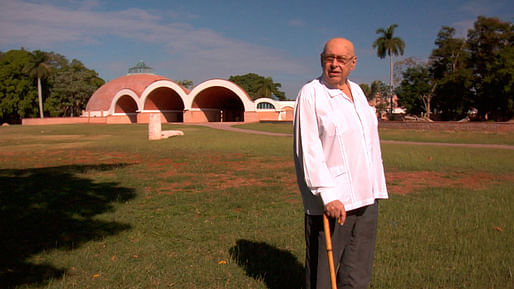
Architect Ricardo Porro
Back in New York, I called up my friend Benjamin Murray, who had attended film school and was working in the industry. I showed Ben photos from Cuba and told him the story; he was immediately hooked. The two of us wanted to make this film because of how profoundly the characters and their story touch on the themes of art and politics; artifice and nature; and the role of the artist (including architects) in any society.
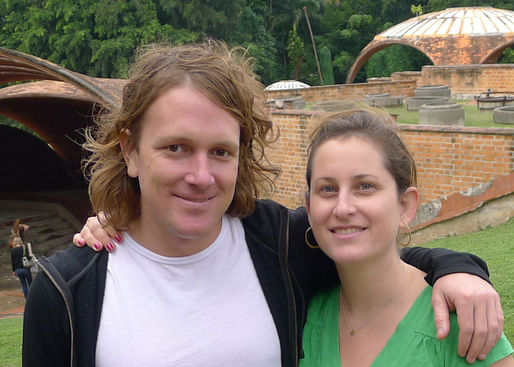
Filmmakers Benjamin Murray and Alysa Nahmias
We were both inspired to make Unfinished Spaces together because of a shared love for the characters in the story. We are drawn to documentaries because, as Lawrence Weschler says, "nothing is too wonderful to be true."
During the ten years that we worked on Unfinished Spaces, Ben launched a successful career in finishing films as an online editor for clients including Martin Scorsese and Nathaniel Kahn, and I completed an M.Arch degree at Princeton, then practiced architecture at RMJM in New York before deciding to pursue teaching and filmmaking full time.
What has been the reaction, among the architecture community, and the public in general?
The reaction in the architecture community and in the general public has been incredibly positive. At the film's world premiere at the Los Angeles Film Festival in 2011, all three architects of the Cuban National Art Schools - Ricardo Porro, Vittorio Garatti, and Roberto Gottardi - were present with us to receive a minutes-long standing ovation from the full theater at L.A. Live. They were ecstatic! They couldn't believe that hundreds of people in North America were admiring their work and were moved by their life stories. Unfinished Spaces has given these architects long-overdue public recognition of their visionary work in 1960s Cuba and beyond.
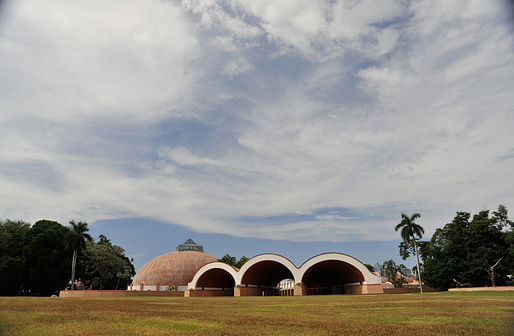
School of Plastic Arts, by Ricardo Porro
Unfinished Spaces has now screened all over the world, from New York's Lincoln Center to the 2012 Venice Biennale, and from theaters filled with conservative Cuban exiles in Miami to the crowds at the official Havana Film Festival on the island. It has won several prizes, including a 2012 Independent Spirit Award. Unfinished Spaces has also prompted fascinating discussions about architecture at local AIA and AIGA chapters (Tampa, Seattle and Phoenix, to name a few); at private architecture studios such as SOM in New York; and through screenings at universities across the world, including Princeton, Penn, Cornell, Oregon, and soon at Cooper Union. We hope many other schools of architecture, art and design will show the film for their students and faculty.
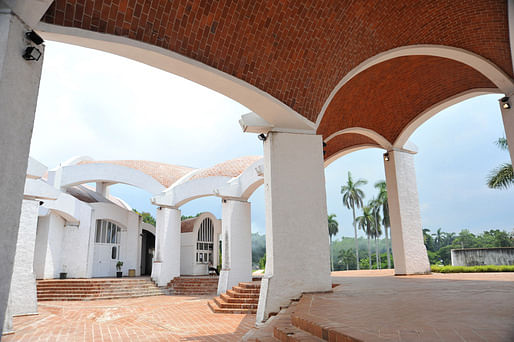
School of Modern Dance, by Ricardo Porro
Audiences at film festivals and private screenings have been moved in very powerful, specific ways. People who love architecture have responded overwhelmingly. Architects leave the theatre praising the fact that the architecture is portrayed as a character rather than a static object. They appreciate how the creative process of architecture is made accessible for non-architects through the course of telling this character-driven story.
One of the highest complements we’ve received so far came from our subject Ricardo Porro’s wife, Elena Porro, who had maintained a healthy scepticism about two young North American filmmakers attempting to narrate a story of the Cuban revolution. She told us after the premiere at the Los Angeles Film Festival that she was very emotional while watching, because it struck her as one of the most accurate depictions she’d encountered of how it felt for her to live in Cuba during the 60s.
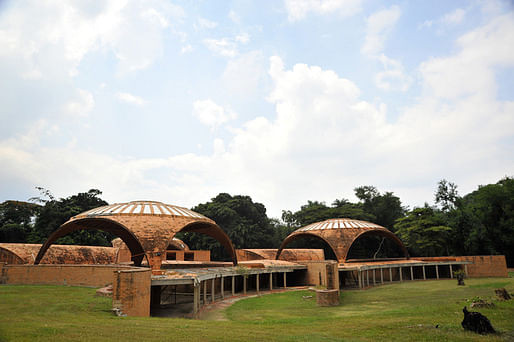
School of Ballet, by Vittorio Garatti
People who didn’t have any particular interest in architecture or Cuba have also been connecting emotionally to the story and wanting to know more about modern architecture and the history of Cuba. That is really gratifying for us as filmmakers, because we love that a story can transcend generations and politics to connect and inspire everyone.
What do you think about Norman Foster's rumored involvement in the completion of Vittoria Garatti’s School of Ballet?
It is hard to know exactly what the status of that situation is. We have not seen anything concrete that Foster or his client, the Cuban-British ballet dancer Carlos Acosta, are proposing, and we would very much like to see concrete plans if they exist. Many other organizations and individuals who care about the National Schools of Art, both inside and outside of Cuba, would like to see this as well. So, we encourage that information to be made public by Acosta, Foster, and the Cuban government.
I value the decision that the Cuban government made a few years ago to declare the National Schools of Art part of Cuba’s national patrimony, and I trust that the Cuban government and the Cuban Ministry of Culture will uphold the spirit of that declaration by respecting the site’s authenticity and authorship.
In addition to the school being considered part of Cuba’s national patrimony, I also think this building is one of the greatest works of modern architecture in the world. And it is such an incredible opportunity that the original architect is still alive and well. I hope that not only he and his design are respected, but that he would be actively involved in any completion or development of the site. In recent years we have watched Vittorio travel to Cuba for many meetings and go out personally to the site to take measurements, so there has definitely been design progress made. We just hope he would be a part of any future plans for the school. But as of now, we are uncertain what is happening, as we are hearing conflicting reports.
No Comments
Block this user
Are you sure you want to block this user and hide all related comments throughout the site?
Archinect
This is your first comment on Archinect. Your comment will be visible once approved.